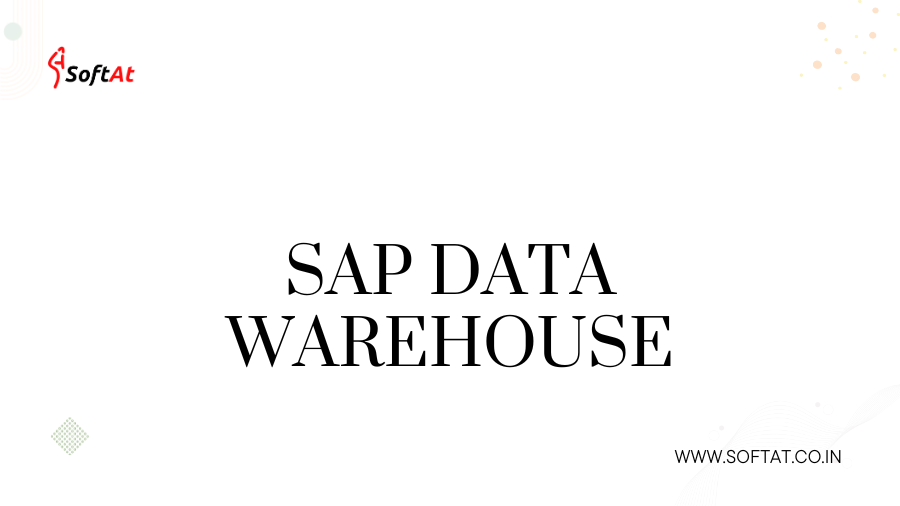SAP Data Warehouse, a cornerstone in the realm of data management, stands as a testament to the evolution of enterprise solutions. In this comprehensive guide, we delve into the intricacies of SAP Data Warehouse, exploring its functionalities, benefits, and how it transforms the landscape of data storage and analysis.
Understanding SAP Data Warehouse
Defining the Core: What is SAP Data Warehouse?
It is a centralized repository that consolidates and stores data from various sources within an organization. It serves as a robust platform for data management, enabling businesses to analyze and derive insights from their vast pools of information.
Key Components of SAP Data Warehouse
The architecture of Data Warehouse comprises key components, including Extract, Transform, Load (ETL) processes, data storage, and analytical tools. These components work cohesively to ensure seamless data integration and analysis.
The Functionality Spectrum
Data Integration and Transformation
One of the primary functions of Data Warehouse is to integrate data from disparate sources. Through ETL processes, raw data undergoes transformation, becoming standardized and ready for analysis.
Data Storage and Management
It provides a scalable and efficient storage solution for structured and unstructured data. Its ability to manage vast volumes of information ensures that businesses can store and access data without compromising on performance.
Analytics and Reporting Capabilities
Unlocking the true potential of data, Data Warehouse offers powerful analytics and reporting tools. Businesses can create meaningful visualizations and reports, aiding in informed decision-making processes.
Benefits of SAP Data Warehouse
Enhanced Data Accessibility
The centralized nature of SAP Data Warehouse ensures that data is easily accessible to authorized users across the organization. This accessibility promotes collaboration and a unified understanding of data.
Improved Data Quality
By standardizing and transforming data during the ETL processes, Data Warehouse contributes to improved data quality. Clean and consistent data are essential for accurate analytics and reporting.
Scalability and Flexibility
As businesses grow, so does the volume of data. Data Warehouse is designed to scale alongside the organization, ensuring that it remains a reliable solution even in the face of increasing data complexity.
Implementing SAP Data Warehouse: Best Practices
Strategic Planning and Alignment
Before implementation, businesses should conduct a thorough analysis of their data needs and align the implementation strategy with organizational goals. This ensures that Data Warehouse becomes a tailored solution.
User Training and Skill Development
Ensuring that users are proficient in leveraging the capabilities of Data Warehouse is crucial. Comprehensive training programs and ongoing skill development initiatives contribute to maximizing the benefits of the system.
Regular Assessments and Optimizations
SAP Data Warehouse should not be a static solution. Regular assessments of its performance and optimizations based on evolving business needs are essential to ensure sustained efficiency and relevance.
Challenges and Solutions
Integration Complexities
Implementing Data Warehouse may pose integration challenges with existing systems. Comprehensive planning and the assistance of experienced professionals can mitigate these complexities.
Data Security Concerns
Centralized data storage raises security concerns. Implementing robust security measures, including encryption and access controls, addresses these concerns and safeguards sensitive information.
The Future of SAP Data Warehouse
Integration with Emerging Technologies
The future holds exciting possibilities as SAP Data Warehouse integrates with emerging technologies such as artificial intelligence and machine learning. This integration will enhance predictive analytics and automate decision-making processes.
Focus on Real-time Analytics
Anticipating the demand for real-time insights, Data Warehouse is expected to evolve its capabilities to support faster data processing and analytics, enabling businesses to make decisions on the fly.
Conclusion: Transforming Data into Insight
In conclusion, SAP Data Warehouse stands as a robust solution for organizations seeking to harness the power of their data. From data integration to advanced analytics, it provides a comprehensive platform for managing and deriving insights from vast datasets. As businesses evolve in the data-driven era, Data Warehouse remains a cornerstone in their journey towards informed decision-making and strategic growth.
Frequently Asked Questions
- Is SAP Data Warehouse suitable for small businesses?
- Yes, It is scalable and can be adapted for use by small businesses, providing them with powerful data management and analytics capabilities.
- How does it ensure data security?
- It incorporates robust security measures, including encryption and access controls, to ensure the confidentiality and integrity of stored data.
- Can Data Warehouse handle real-time analytics?
- While traditionally focused on batch processing, Data Warehouse is evolving to support real-time analytics, addressing the growing demand for instant insights.
- What role does ETL play in Data Warehouse?
- ETL (Extract, Transform, Load) processes in Data Warehouse are crucial for integrating and transforming raw data from diverse sources into a standardized format for analysis.
- How often should businesses assess and optimize their Data Warehouse implementation?
- Regular assessments and optimizations should be conducted based on evolving business needs, ensuring that Data Warehouse remains aligned with organizational goals and performance expectations.
You may be interested in:
How Many Total T-Codes (Transaction Codes) Are There in SAP?





